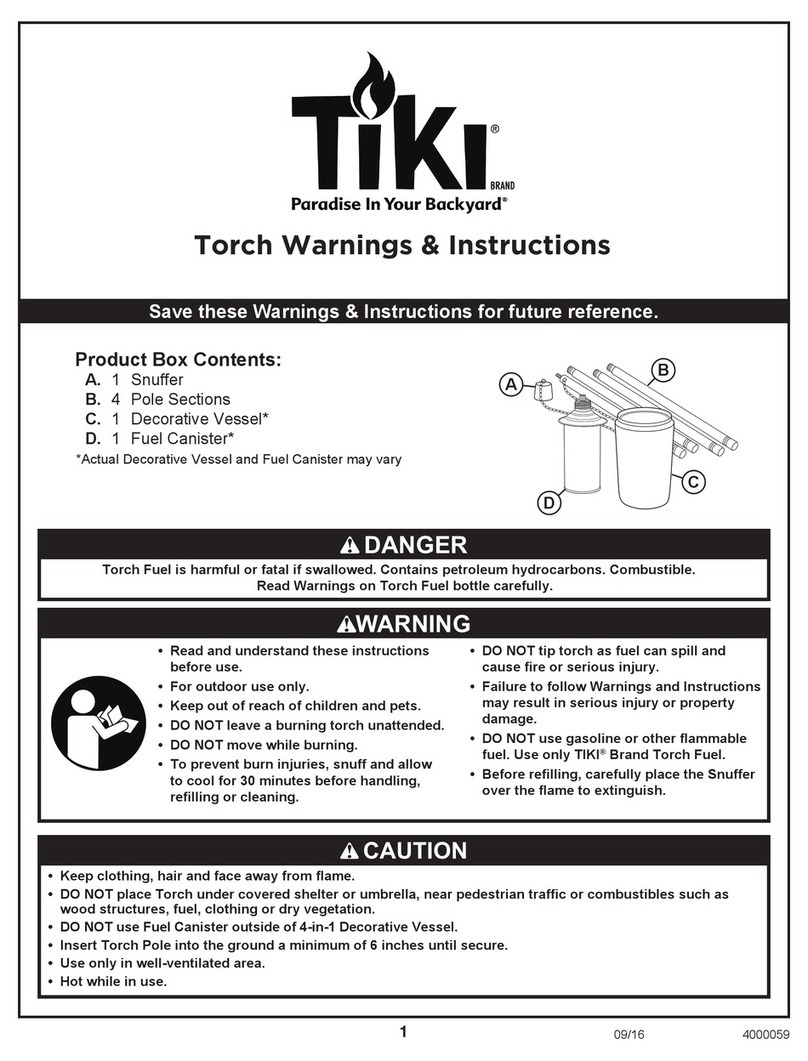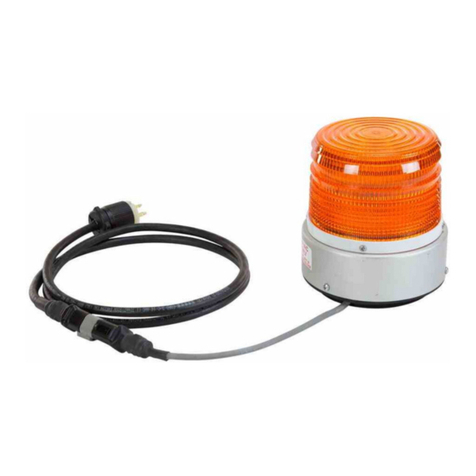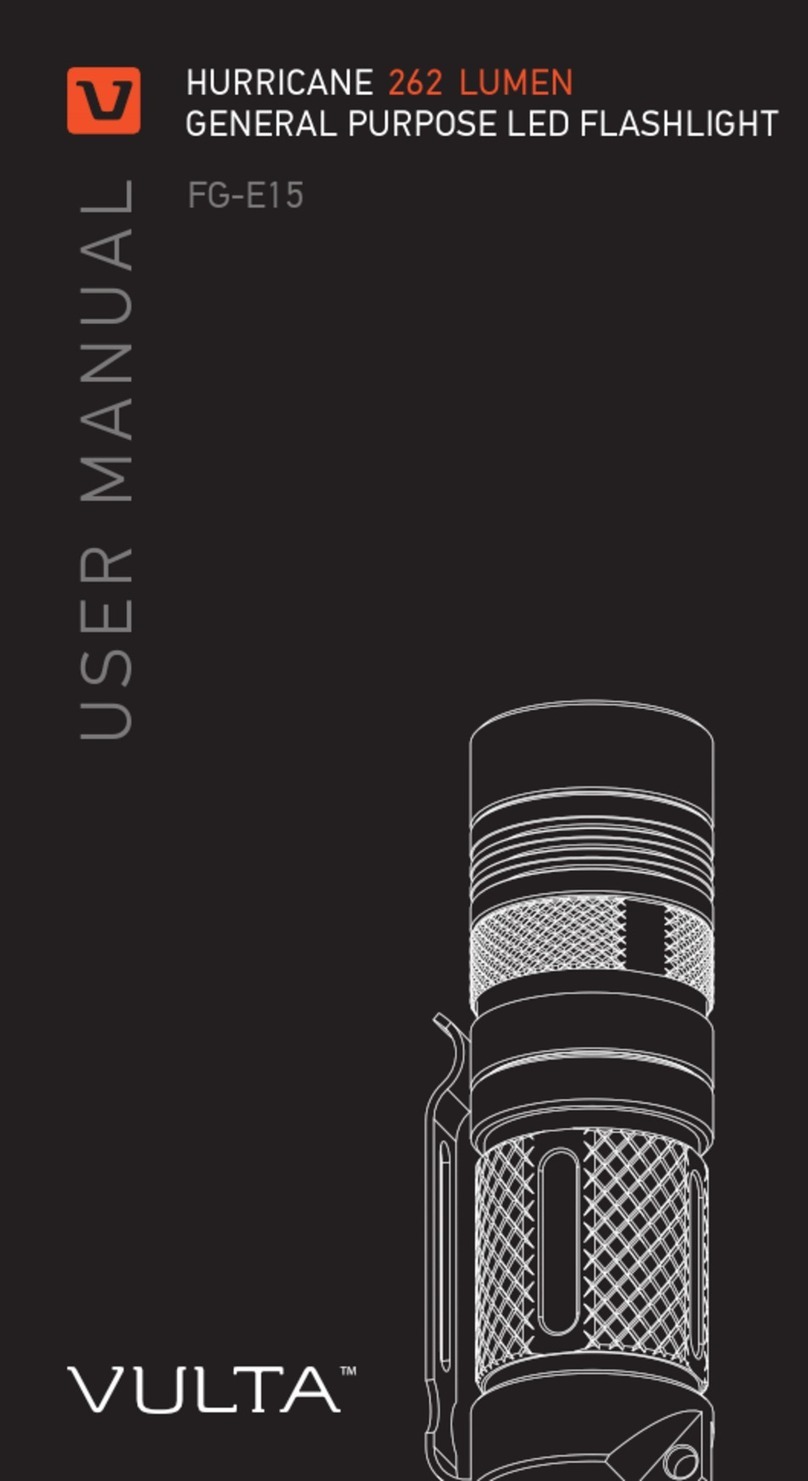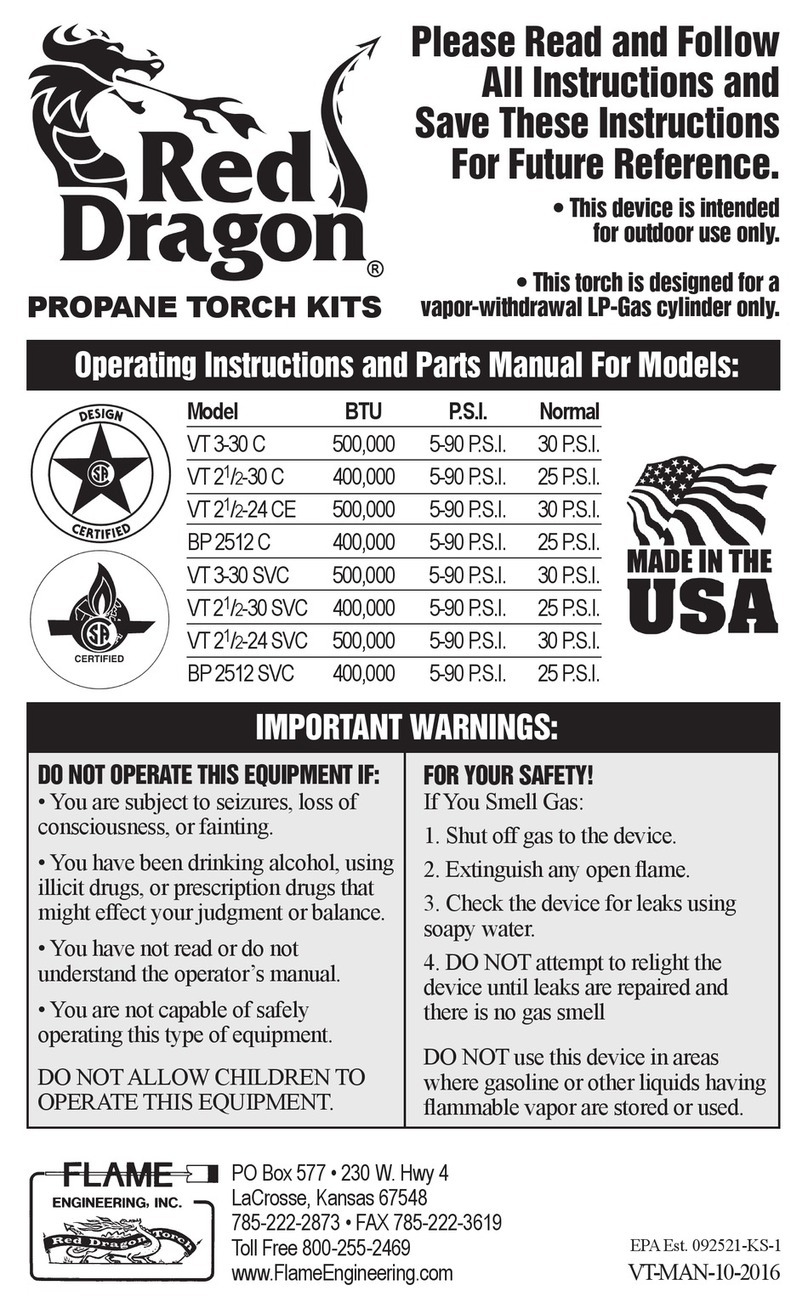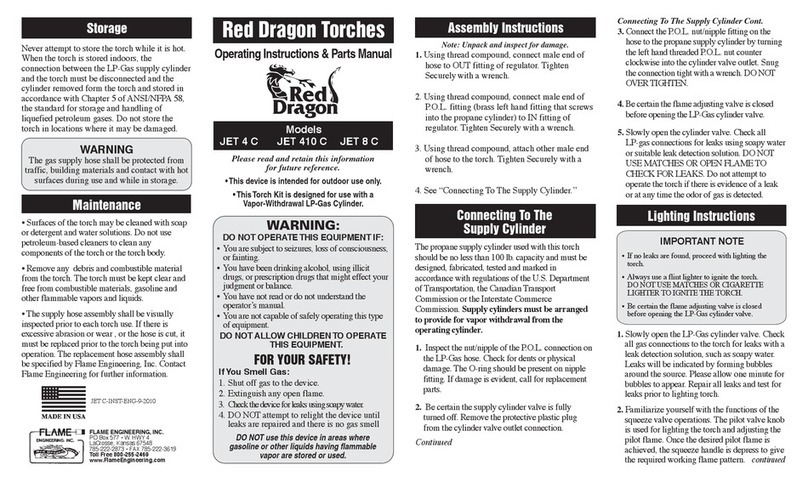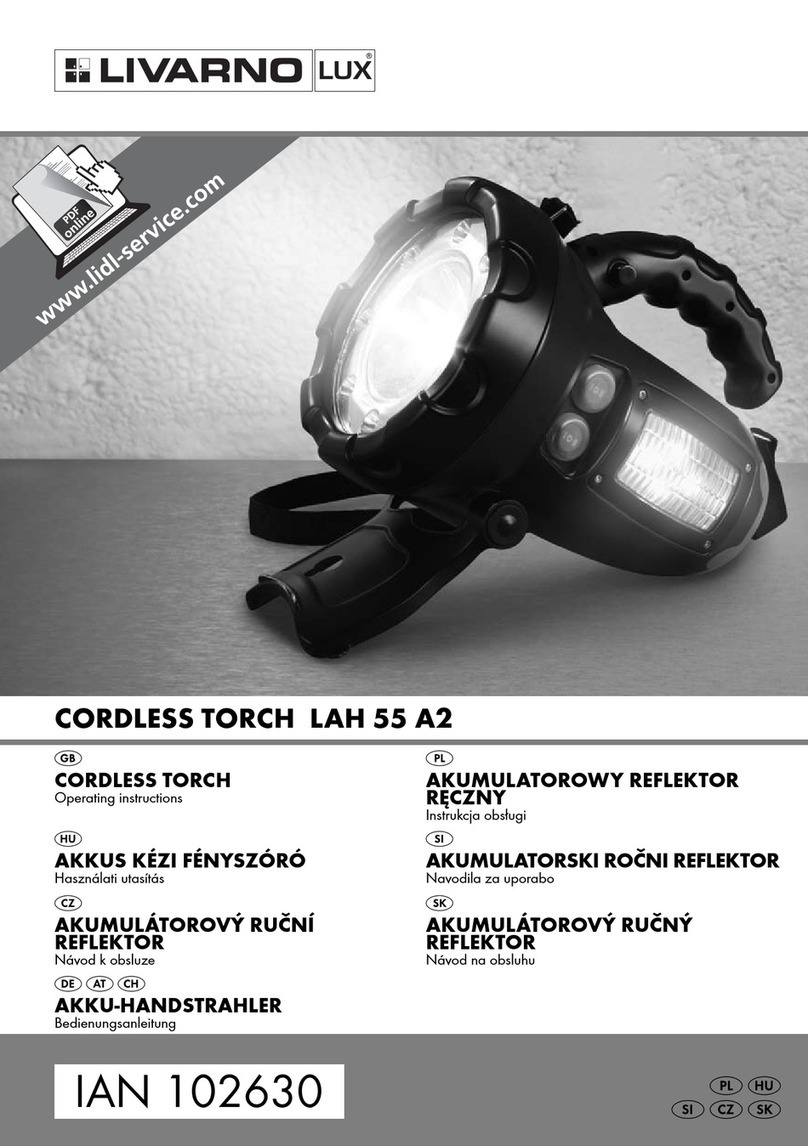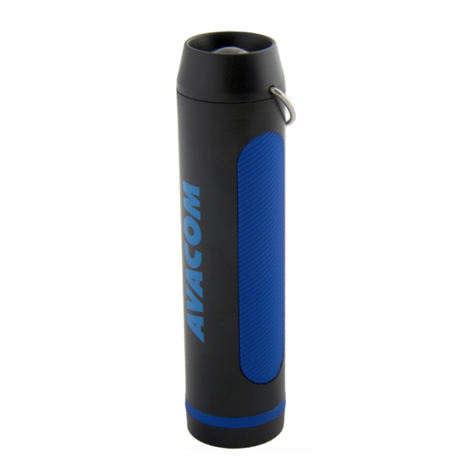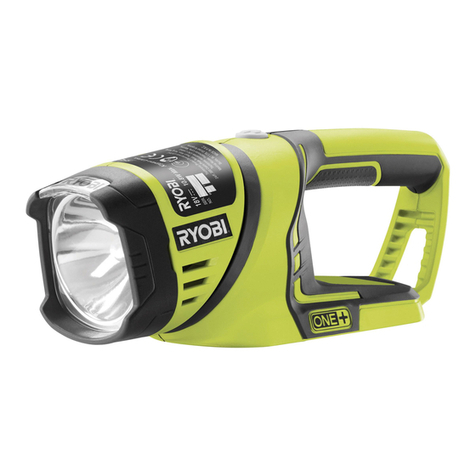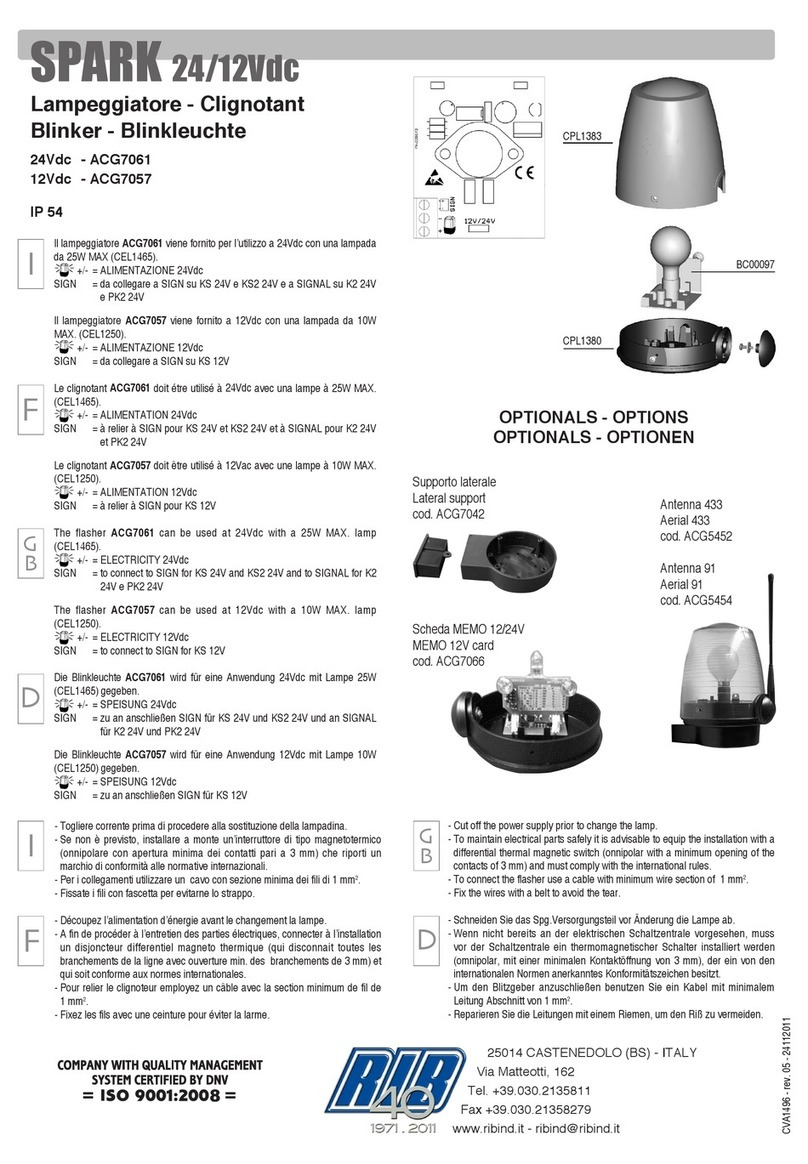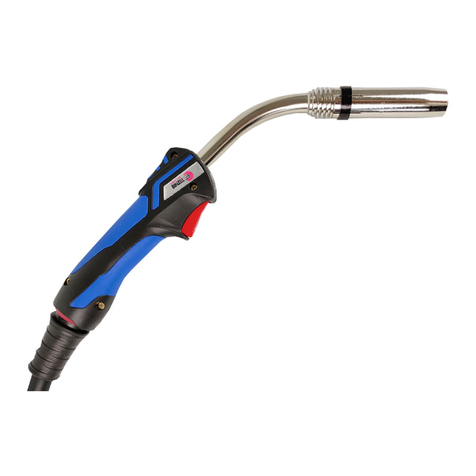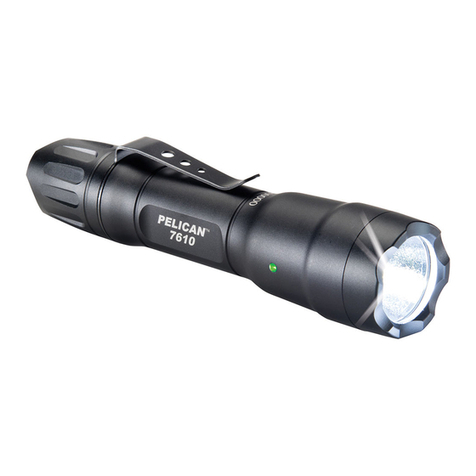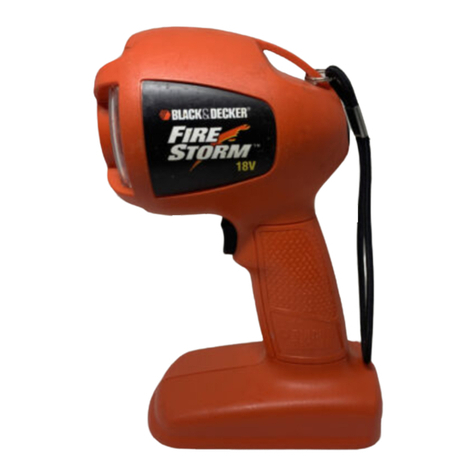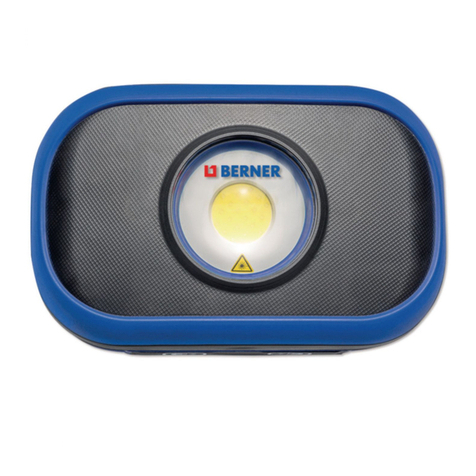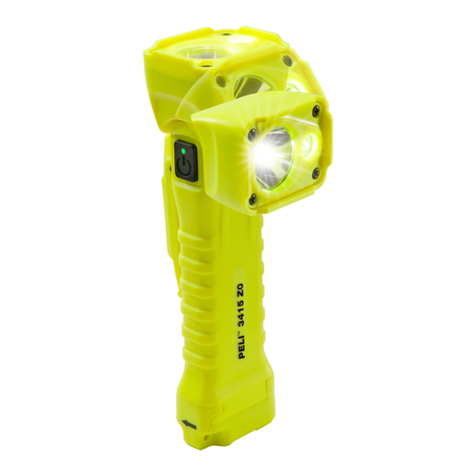
FLAME ENGINEERING, INC. • P.O. Box 577 • West Highway 4 • LaCrosse, KS 67548
800-255-2469 • 785-222-2873 • Fax 785-222-3619 • www.FlameEngineering.com 5
RED DRAGON PROPANE FLARE OPERATING INSTRUCTIONS
BEFORE OPERATING THE RED DRAGON PROPANE FLARE:
Make sure you have selected a safe area for placement and operation with
approximately 40 foot radius and a minimum 50 feet of vertical clearance.
1. Attach pilot hose to an LPG fuel supply with at least
five gallon capacity.
2. Attach the main evacuation line to the tank being
evacuated. This connection will be either a P.O.L
fitting or a commercial tank connection, depending on
the model.
3. Slightly open each tank, one at a time, and test for
leaks at all connections to the Solenoid Control Box
using soapy water or commercial leak testing fluid.
Turn off tanks and correct any leaks before continuing.
Repeat this step if you have to correct leaks until none
are found.
4. Make certain that the main and remote switches are
in the "OFF" position. Slowly open each tank valve
fully. Connect electrical power cord to a 110 volt A.C.
power source.
NOTE: The pilot hose is equipped with a safety P.O.L. fitting.
If the valve on the pilot fuel container is turned on too
quickly, the P.O.L. fitting will check (you may hear a click)
just as it would if the hose ruptured. This check valve
restricts flow and will result in failure of the pilot to light or
result in an insufficient pilot flame. REMEMBER, ALWAYS
TURN THE TANK ON SLOWLY!
5. After making certain the remote switch is in the
"OFF" position, move the main switch to the "ON"
position. The RED indicator light will come on. The
pilot torch should now automatically light.
NOTE: It is possible you will hear the buzzing sound of
the electrical spark attempting to light the pilot burner.
The ignition system will cycle in seven seconds. The
ignition system will attempt to re-light after a 7 second
delay. A third ignition will be attempted. Failure to
establish a pilot results in the unit locking out.
Should the pilot not achieve ignition, turn the main
switch "OFF", wait 30 seconds and start again. It
may be necessary to repeat this procedure several
times to purge sufficient fuel through the pilot fuel
lines.
Once the pilot is burning, the system will continue
to monitor itself. If the pilot torch goes out, an
automatic relight is attempted. If reignition does
not occur within 10 seconds, the system will
automatically shut down and the operator should
start again at step 4 in these instructions.
6. After pilot is ignited, move the remote switch to
the "ON" position to start evacuation of the main
tank.Leak test hose connections from torch and
flare tube to the solenoid control box using soapy
water or commercial leak detector.
LIGHTING PROCEDURES
SHUT DOWN PROCEDURES
1. Turn the valve off on the tank being evacuated and allow all LP-Gas to escape from the fuel line.
2. Turn the remote switch to "OFF".
3. Close the pilot tank valve.
4. After pilot has burned out, turn main switch to "OFF".
5. Disconnect the unit from the power supply and disconnect hoses from both tanks.
Before Starting, Make sure the "Main" switch and the "Remote" switch are in the "OFF" position.
